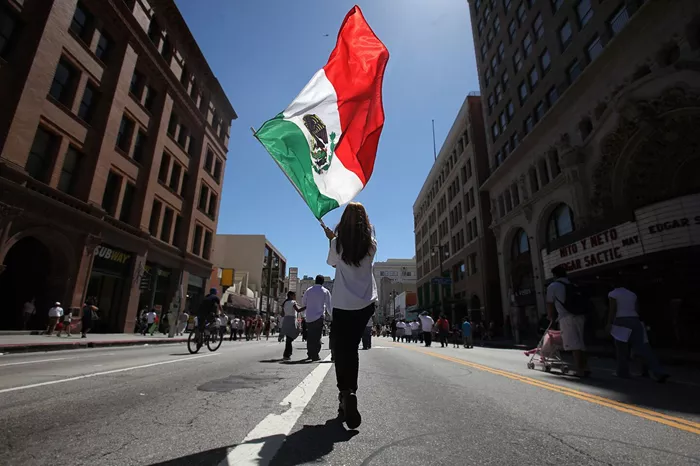Over the weekend, protests erupted in Los Angeles against federal immigration enforcement actions, drawing significant attention as demonstrators waved Mexican flags amid clashes with law enforcement. The images of protesters carrying Mexican flags became a focal point in media coverage and sparked strong reactions from the Trump administration.
White House Press Secretary Karoline Leavitt posted on X, formerly Twitter, that the riots demonstrated a need for increased immigration enforcement personnel and resources. She accused President Joe Biden of allowing millions of unvetted illegal immigrants into the country, calling it an “invasion” that must be reversed.
During the protests, some demonstrators carried both Mexican and U.S. flags as federal agents conducted raids targeting immigrant communities. The protests were fueled by anger over intensified efforts by U.S. Immigration and Customs Enforcement (ICE) to increase daily arrests. Images of burning vehicles and law enforcement in riot gear circulated widely, reinforcing the administration’s narrative of a border crisis.
Republican strategist Matt Wylie said these visuals handed former President Donald Trump a political advantage, providing what he called “Exhibit A” to support a tough stance on immigration. Wylie said the protests would strengthen Trump’s campaign promises to crack down on illegal immigration.
The Trump administration has recently sought to boost arrests and deportations of undocumented immigrants, despite facing legal challenges and slower-than-expected increases in enforcement. While officials insist their focus is on the “worst of the worst,” Democrats and immigrant advocates argue that innocent people are being targeted in workplaces and courts, including in Los Angeles.
Experts cautioned against interpreting the display of Mexican and Latin American flags as a sign of foreign allegiance. Julia Mendelsohn, a political linguistics researcher, said officials were weaponizing the flags to delegitimize the protests and justify harsher immigration policies. She warned that this narrative could sway public opinion toward more punitive enforcement measures.
National Guard troops were deployed to address violence linked to the protests, further escalating tensions. Observers pointed out that waving national flags is a common expression of cultural identity in the United States. For example, Puerto Rican flags are prominently displayed during parades in New York City, and Irish flags are widely seen on St. Patrick’s Day.
Alvaro Huerta, an immigration-focused professor, argued that displaying flags is a lawful form of cultural expression and solidarity, not a threat. He questioned why the Mexican flags sparked accusations of invasion while other ethnic flags are accepted without controversy. Both Huerta and Mendelsohn emphasized that the flags represent community identity amid federal raids, not insurrection.
While some protests remained peaceful, media coverage largely focused on violent scenes involving tear gas, fires, and police in tactical gear. These images continued to circulate on social media and news outlets, influencing public perception as the federal government clashed with local leaders.
Wylie predicted that the protests would provide Trump with a “political gold mine,” allowing him to shift attention from other political issues and reinforce his core campaign messages of border security and law and order.


